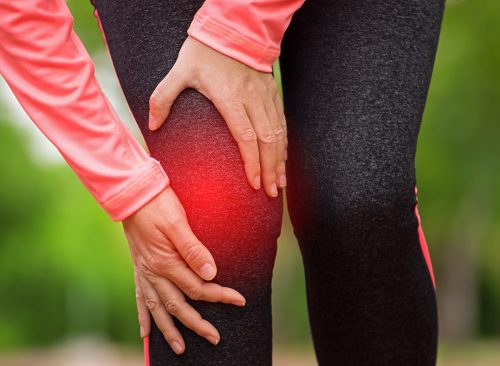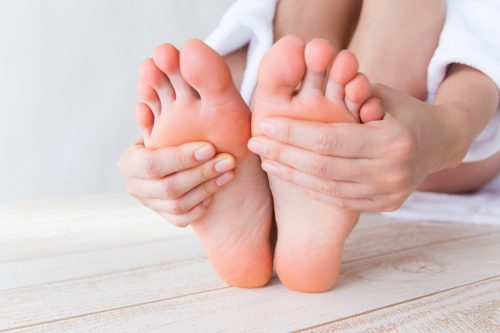8 Silent Signs of Arthritis That You Should Never Ignore
Here are the signs and symptoms to look out for.

According to a new survey, over 50 million Americans suffer from some type of arthritis. There are several different types of arthritis, ranging from osteoarthritis, the most common, to more serious forms like lupus. Here are some of the most common signs and symptoms to look out for.

Osteoarthritis (OA) is the most common form of arthritis, according to the CDC. It is often referred to as degenerative joint disease or "wear and tear" arthritis and occurs most frequently in the hands, hips, and knees. The most common symptom is pain or aching. The second most common symptom of osteoarthritis is stiffness.

The third most common symptom of osteoarthritis is a decreased range of motion or flexibility. The fourth most common symptom to look out for? Swelling.

Rheumatoid arthritis, or RA, is an autoimmune and inflammatory disease, according to the CDC, "which means that your immune system attacks healthy cells in your body by mistake, causing inflammation (painful swelling) in the affected parts of the body," they say. Symptoms include:
- Pain or aching in more than one joint
- Stiffness in more than one joint
- Tenderness and swelling in more than one joint. It can also involve the same symptoms on both sides of the body (such as in both hands or both knees, weight loss, fever, fatigue or tiredness, and weakness

Fibromyalgia, a condition that causes pain all over the body, sleep problems, fatigue, and often emotional and mental distress, has a variety of symptoms, says the CDC:
- Pain and stiffness all over the body
- Fatigue and tiredness
- Depression and anxiety
- Sleep problems
- Problems with thinking, memory, and concentration
- Headaches, including migraines
- Tingling or numbness in hands and feet
- Pain in the face or jaw, including disorders of the jaw known as temporomandibular joint syndrome (also known as TMJ)
- Digestive problems, such as abdominal pain, bloating, constipation, and even irritable bowel syndrome (also known as IBS)

Gout is a common form of inflammatory arthritis that is very painful. "It usually affects one joint at a time (often the big toe joint). There are times when symptoms get worse, known as flares, and times when there are no symptoms, known as remission," says the CDC. Symptoms to look out for in flare-ups include joints that are hot, swollen, and painful.

Lupus can affect almost any organ in your body, the CDC explains. While symptoms differ from person-to-person they include muscle and joint pain, fever, rashes, chest pain, sun or light sensitivity, kidney problems, mouth sores, prolonged or extreme fatigue, anemia, memory problems, blood clotting, and eye disease.

If you experience any signs of arthritis, make an appointment with your doctor so you can get diagnosed. "Early and effective treatment is important to minimize symptoms and prevent the disease from getting worse, especially for certain forms of arthritis, like lupus, rheumatoid arthritis, and gout," says the CDC.
RELATED: 15 Things You Should Never Do at the Doctor's Office, Say Doctors

While you can't cure arthritis, treatment can help reduce pain, minimize joint damage, and improve or maintain function and quality of life.














